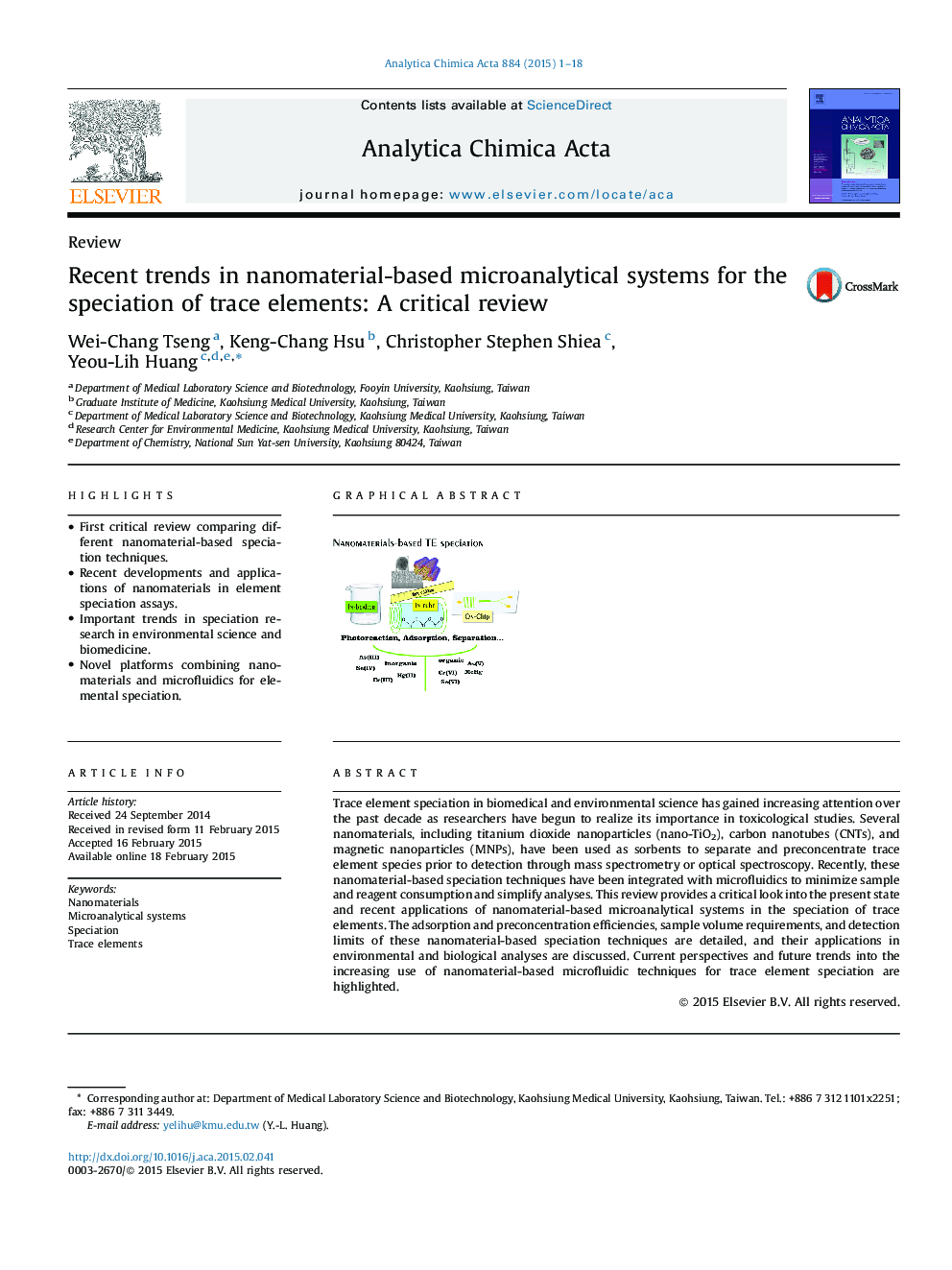| Article ID | Journal | Published Year | Pages | File Type |
|---|---|---|---|---|
| 1163224 | Analytica Chimica Acta | 2015 | 18 Pages |
•First critical review comparing different nanomaterial-based speciation techniques.•Recent developments and applications of nanomaterials in element speciation assays.•Important trends in speciation research in environmental science and biomedicine.•Novel platforms combining nanomaterials and microfluidics for elemental speciation.
Trace element speciation in biomedical and environmental science has gained increasing attention over the past decade as researchers have begun to realize its importance in toxicological studies. Several nanomaterials, including titanium dioxide nanoparticles (nano-TiO2), carbon nanotubes (CNTs), and magnetic nanoparticles (MNPs), have been used as sorbents to separate and preconcentrate trace element species prior to detection through mass spectrometry or optical spectroscopy. Recently, these nanomaterial-based speciation techniques have been integrated with microfluidics to minimize sample and reagent consumption and simplify analyses. This review provides a critical look into the present state and recent applications of nanomaterial-based microanalytical systems in the speciation of trace elements. The adsorption and preconcentration efficiencies, sample volume requirements, and detection limits of these nanomaterial-based speciation techniques are detailed, and their applications in environmental and biological analyses are discussed. Current perspectives and future trends into the increasing use of nanomaterial-based microfluidic techniques for trace element speciation are highlighted.
Graphical abstractFigure optionsDownload full-size imageDownload as PowerPoint slide
